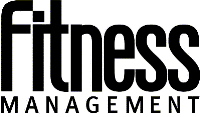
If knowledge is power, and I believe it is, then fitness facility operators will want to know that their secrets are out. A new book titled, “
The Big Fat Health and Fitness Lie,” by Craig Pepin-Donat singles out the fitness industry to show consumers how they have been leading lifestyles of doom by not having the facts about addiction, supplements, diets and health clubs. Yes, health clubs. Pepin-Donat devotes an entire chapter to spelling out the techniques fitness center salespeople use to get consumers to purchase memberships, why they and management couldn’t really care less whether consumers come to the club once they buy, and how much more money, in addition to the monthly dues, it really is going to cost members to accomplish their goals.
But, believe it or not, this is not a bad thing that Pepin-Donat has done. This book is actually good for both consumers and for our industry. Pepin-Donat’s goal is clearly to help the consumer to understand how to lose weight and get in shape, and he does not discourage fitness center memberships. In fact, he encourages them. But, he warns that fitness centers have to earn consumers’ business. “There is nothing wrong with a salesperson trying to help you make a decision to purchase their product or service,” he says. “The only thing you need to be concerned with is how they do it. If the salesperson comes across as being overly aggressive and negative in any way, walk out. If the company cannot at least train their sales force to be professional and courteous, they haven’t earned the right to get your business.”
The mess fitness facilities have made of customer service needs to be cleaned up. Pepin-Donat provides some good, solid facts about how facility operators run their businesses. And, it’s not all negative toward fitness centers. He gives some good explanations for why facility managers do the things they do, for their business’ sake. The key is that by making consumers aware of this, and why, perhaps consumers can get past the obstacles of joining a facility. For instance, he explains why salespeople have the attitudes they do (“Unfortunately, many fitness salespeople do not care about you or your goals.”), and why most facility managers don’t make it a practice to communicate regularly with their members outside of the facility or to get inactive, paying members back to the club to work out (“most clubs avoid sending direct-mail communication to their current member base because there is always the fear of awakening the sleeping giant of members who are not using the club.”).
Consumers need to exercise to lose weight, and Pepin-Donat has clearly painted a picture that one of the best ways for them to do that is in a fitness facility. He is quite frank about what consumers should look for in a facility, making a comparison of the equipment and amenities in a Curves vs. a “quality fitness club,” and, in a separate chapter, decrying the quality of some home fitness equipment and the gimmicks companies use to sell it. But, as he says, “In order to get results from joining a fitness center, you have to use it consistently, and most club joiners never come close.” Because of this, he makes no bones about what it takes to make a commitment to succeed. “If you don’t really know what you are doing and have limited or no fitness experience, joining a club without assistance and guidance can turn out to be a total waste of time and money.” This is where personal training comes in. Pepin-Donat spells out just how much more expensive getting fit at a fitness center can be, and, if consumers are going to buck up for the extra cost, what they really should look for.
Most of you know that the truth told about fitness centers in “The Big Fat Health and Fitness Lie” comes from a credible source. Pepin-Donat is known as a seasoned operator in the health/fitness industry, having operated more than 450 fitness centers in 11 countries. He left his last job in the industry prior to publishing this book, saying, “There is no way I could convey this information while being employed within the health and fitness industry. I would be fired.” And, when warned about alienating an industry he has worked in for more than 25 years, he says, “Why would anyone be threatened or alienated by the truth? The answer is that the truth can hurt the profits of companies that rely on the insecurity and vulnerability of consumers.”
Consumers who read this book will likely not be turned off about fitness facilities. And, those fitness center operators who read this book and
are turned off — well, I guess you know why. Either way, this truth could just help you to make some changes in your business where possible. But, more importantly, it may empower you to know that the next person walking through your door may know more about your business than you once thought. You could use that to your advantage — or not.





